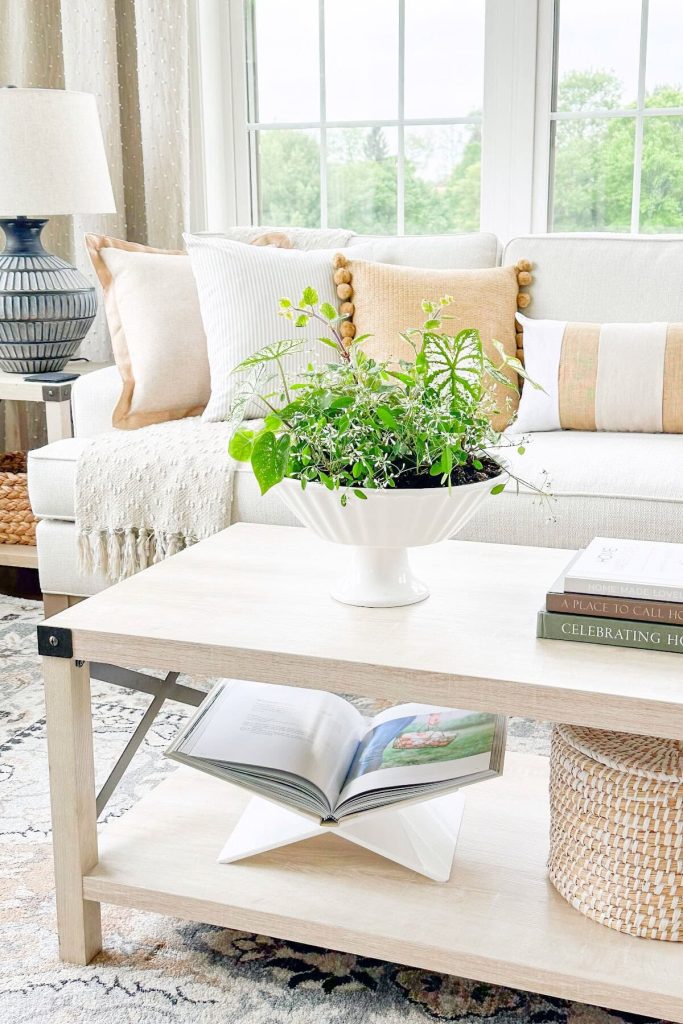Intentional Property and the Art of Living with Less: How to Choose Wisely

The Essence of Intentional Living
In today’s rapid-fire culture dominated by consumerism, where the latest trends often dictate our purchasing habits, the idea of intentional living stands out as a substantial counterpoint. This philosophy urges individuals to pause and engage in thoughtful consideration regarding their possessions. Instead of accumulating items, it prompts a shift towards valuing quality over quantity.
The principle of living with less does not equate to deprivation. Rather, it embodies a celebration of simplicity. It opens up a space where choices can resonate with personal values and contribute significantly to a fulfilling lifestyle. To fully understand intentional living, it helps to explore a few fundamental principles:
- Mindfulness: Practicing mindfulness involves being fully present and aware of the choices we make regarding our possessions. This practice can transform an individual’s relationship with ownership. For example, rather than purchasing products impulsively during a sale, one may take time to assess whether the item truly adds value to their life.
- Purpose: Each item we own should have a clear purpose, enriching our life in some way. This could mean selecting a high-quality kitchen knife that makes cooking enjoyable versus acquiring an assortment of cheap knives that clutter the drawer and are seldom used.
- Sustainability: Emphasizing sustainability can lead to significant long-term advantages. By opting for durable and eco-friendly products, such as bamboo toothbrushes, reusable shopping bags, or vintage furniture, we not only reduce waste but also make conscious decisions that promote environmental health.
Adopting a mindset conducive to wise choices requires critical reflection on what truly serves our lives. This self-examination might include asking essential questions: Do I need this, or am I buying it out of habit? How will this item contribute to my happiness or functionality?
Transitioning towards intentional living can liberate us from the shackles of clutter that often lead to stress and anxiety. It’s not merely a personal journey, but rather a catalyst for broader change in tackling issues like excessive consumption and waste. As more individuals embrace this lifestyle, communities can shift towards sustainable practices, contributing to a societal movement aimed at minimizing environmental impact.
As we explore the art of living with less, various practical strategies, such as minimalism workshops or decluttering challenges, can provide fruitful avenues for enhancing understanding and commitment to an intentional lifestyle. Engaging with these practices not only fosters personal growth but can inspire others, ultimately leading to a more meaningful and deliberate way of living.

DIVE DEEPER: Click here to learn how to maximize space
Understanding Intentional Property: A Gateway to Mindful Consumption
Exploring the concept of intentional property invites a deeper look at our relationship with the things we own. This idea extends the notion of intentional living by focusing on the items that fill our spaces. When we approach ownership with intention, we engage in an act of selective curation rather than blind accumulation. This begs the question: what does it mean to truly own something? Is it merely the act of purchasing, or does it encompass a deeper appreciation for the impact our possessions have on our lives?
To navigate the art of choosing wisely, it’s essential to look at the specific aspects that contribute to a meaningful selection process. Here are some key considerations that can influence our decisions:
- Quality over Quantity: Investing in well-made items can prove to be more economical in the long run. A carefully chosen, high-quality jacket can last for years compared to a fast-fashion alternative that needs replacement every season.
- Emotional Connection: Items that carry personal significance or memories can bring joy and a sense of belonging. Consider that vintage family heirloom or a travel souvenir; these possessions can enrich our lives beyond their material value.
- Practical Utility: When every item has a clear function in our daily lives, it reduces clutter and enhances the living experience. Evaluate whether each possession serves a purpose—do you genuinely use that fancy bread maker, or does it merely collect dust?
As we cultivate a more intentional approach to our belongings, a pivotal mindset shift occurs—one that challenges the overarching culture of consumerism that permeates American society. We begin to recognize the pressure to keep up with trends, often fueled by social media and advertising, ultimately driving us toward unnecessary purchases. By applying a critical lens to our buying habits, we can liberate ourselves from the cycle of consumption that can lead to financial strain and dissatisfaction.
The journey toward intentional property isn’t without its challenges, but several practical frameworks can assist in making healthier choices. Embracing a strategy of gradual decluttering can prove tremendously freeing. Here are a few steps to get started:
- Set Clear Goals: Determine what you want your space to feel like. A clear vision can guide your decision-making process regarding what to keep or release.
- The One-Year Rule: If you haven’t used an item in the past year, consider whether it truly serves you. This guideline can help eliminate unnecessary clutter.
- Visualize Your Space: Create a mental image of your ideal living environment; this can help you evaluate what items align with that vision.
Deliberate refinement of our possessions will create room not just physically but also mentally; it fosters a sense of clarity and peace. This intentionality unleashes the possibility of a life enriched with purpose and authenticity, where every item tells a story or fulfills a need. As we progress on this path, we might find that less truly is more, and the art of living with less can lead to greater happiness and fulfillment. Embracing intentional property is more than a lifestyle choice; it’s a profound affirmation of our values and priorities.
| Category | Key Features |
|---|---|
| Minimalism | Focuses on reducing clutter and enhancing experiences. |
| Mindful Selection | Encourages thoughtful choices in acquiring possessions that provide true value. |
| Financial Freedom | Reduces unnecessary spending, paving the way for savings and investments. |
| Sustainable Living | Promotes environmentally friendly practices by consuming less. |
| Quality Over Quantity | Emphasizes investing in enduring, high-quality items. |
With the concept of Intentional Property, individuals are challenged to embrace a lifestyle centered around conscious choices, paving the way to a more fulfilling existence. The practice of minimalism encourages people to focus on what genuinely matters, making space for meaningful experiences rather than physical possessions.Adopting the art of mindful selection ensures that every acquisition has a purpose, reducing impulsively bought items that clutter both homes and minds. As one curtails unnecessary expenditures, the path to financial freedom becomes clearer. This allows for more significant investments in personal growth or enjoyable activities.Furthermore, adopting these principles fosters sustainable living. Reducing waste not only benefits personal well-being but also contributes positively to the planet. Ultimately, prioritizing quality over quantity transforms consumer habits, leading to purchases that last longer and carry more value. These essential aspects stand to enrich lives, urging readers to explore how they can implement such practices in their journey towards intentionality.
DISCOVER MORE: Click here to uncover the secrets of simple living
Navigating Consumerism: The Influence of Mindset on Intentional Property
To fully embrace the ethos of intentional property, it’s crucial to acknowledge the subjective nature of consumption and the profound influence our mindset has on the decision-making process. The challenge lies in overcoming societal expectations that dictate our worth through material belongings. We often find ourselves entangled in the omnipresent narrative of success equating to possession, which can skew our judgment about what we truly need. By shifting our perspective to one of mindful consumption, we can better align our choices with our values and long-term aspirations.
One effective approach to cultivate a mindset conducive to intentional property is adopting a minimalist philosophy. Minimalism is not merely about living with fewer items; rather, it’s an appreciation for simplicity that extends to our lifestyles. When we commit to living minimally, we prioritize experiences and relationships over the acquisition of goods. Consider renowned minimalist advocates, such as Marie Kondo, who encourages people to surround themselves solely with items that “spark joy.” This can inspire individuals to reflect on their relationship with their possessions and identify what holds genuine value in their lives.
Engaging in this reflective process can also lead to a transformative shift in how we perceive new purchases. Each transaction becomes less about satisfying immediate impulses and more about making a memory or supporting a passion. For example, instead of buying the latest smartphone purely for its status, think about whether it can enhance productivity or creativity. This assessment allows for a deeper understanding of practical utility, ensuring that new acquisitions contribute meaningfully to our lives.
Embracing Sustainable Choices
Another crucial aspect of intentional property is the growing awareness surrounding sustainability. As more individuals become increasingly concerned about environmental impacts, incorporating sustainable practices into our consumer habits can redefine ownership. Opting for locally-made products or exploring second-hand options can yield profound benefits, from supporting small businesses to reducing waste. Not only does this align with the intentional property philosophy, but it also cultivates a sense of community and shared responsibility.
- Support Local Artisans: By purchasing handmade or locally crafted goods, we not only help to sustain the economy but also bolster unique creativity and craftsmanship.
- Explore Thrift Stores: Thrift shopping is a treasure hunt that promotes recycling and can lead to fantastic finds that help reduce our carbon footprint.
- Prioritize Eco-Friendly Products: Smartly choosing products made from sustainable materials can help ensure your intentional possessions contribute positively to the environment.
Building an intentional property mindset also involves education and community engagement. Engaging in workshops, discussions, or online platforms dedicated to minimalism and intentional living can open doors to new ideas, perspectives, and practices. By surrounding ourselves with like-minded individuals, we can mitigate the internal pressure to conform and refine our approach to consumption.
Ultimately, making informed choices about our possessions requires a dedication to continuous learning and self-reflection. Resources such as documentaries, books, and blogs dedicated to intentional living can provide essential insights and inspiration. These tools encourage us to avoid impulsive buying behaviors while developing a conscious connection to our belongings—each item thus becomes an embodiment of our principles rather than an echo of societal pressure.
DISCOVER MORE: Click here to uncover mindfulness techniques
In Conclusion: The Path to Intentional Living
In a world increasingly dominated by consumerism, intentional property allows us to reclaim our lives by prioritizing what truly matters. By adopting a minimalist mindset, we challenge the status quo that equates success with accumulation. Instead of being driven by fleeting trends or societal pressures, we learn to curate our possessions with purpose, focusing on experiences, relationships, and values that lead to a more meaningful existence.
Taking steps towards intentional property means embracing sustainability in our choices. Supporting local artisans, shopping second-hand, and choosing eco-friendly products not only minimizes our ecological footprint but also fosters a sense of community and responsibility. These actions can serve as powerful reminders that our consumption has the power to create positive change in the world.
Moreover, this journey involves continuous education and engagement with diverse perspectives on minimalism and intentional living. By connecting with like-minded individuals and seeking knowledge from various resources, we cultivate a supportive network that reinforces our commitment to mindful consumption.
Ultimately, the art of living with less is not merely a trend but a transformative way to redefine our relationship with material possessions. Each intentional choice becomes a reflection of our aspirations rather than constraints imposed by others. As we navigate this path, we discover that true wealth lies in the richness of our experiences and the fulfillment of our values, leading us to a life that is not just lived, but cherished. Embrace the power of intentional property, and choose wisely—your future self will thank you.


